|
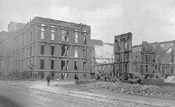
A building in downtown San Francisco damaged in the
1906 quake.
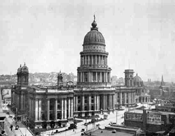
City Hall the day before the earthquake.

Damage on East Howard Street after the 1906
earthquake.

Damage to the Embarcadero area, a result of the
1906 quake in San Francisco.
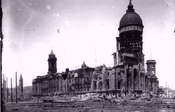
Damage to City Hall after the earthquake
occurred.

Wood houses were thought to have fared quite well
during this earthquake; however, this one in
particular was stationed in the Marina district of
San Francisco.
|
1906 San Francisco
Earthquake
On April 18th,
1906 at 5:12 am, a very large earthquake struck the
San Francisco Bay Area. As a result, buildings were
destroyed, hundreds were killed, and electrical,
gas, and water mains were ruptured. Severed water
mains resulted in a wildly-burning conflagration
which lasted for days in a residential and business
district of San Francisco, south of Market
Street.
|
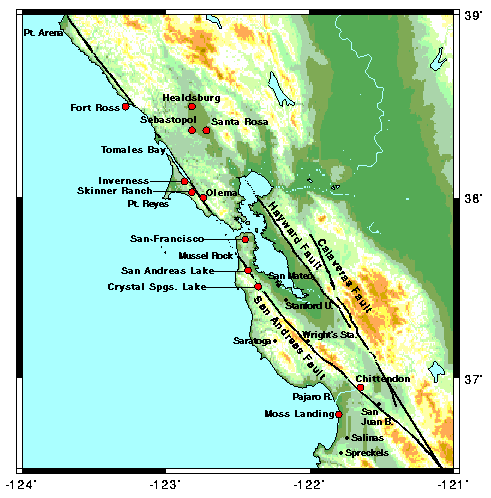
|
This
map displays the areas that were affected
by the 1906 earthquake. It affected areas
as far north as Healdsburg and Santa Rosa,
and as far south as
Salinas.
|
A 270-mile
stretch of the San Andreas fault ruptured that day,
with the largest displacement (separation of land
horizontally) being 21 feet, to the northwest of
San Francisco.
The earthquake
was an M7.7 on the moment magnitude scale (an 8.3
on the Richter scale), the 6th largest earthquake
to occur in the contiguous United States. More that
3,000 casualties were reported in San Francisco,
the population at that time a mere 400,000. Over
half the entire population of San Francisco was
left homeless, mostly due to the continuous 3-day
fire that destroyed nearly 5 square miles of both
businesses and private homes. Almost 30,000
buildings were destroyed, and the area lost a total
of about $400 million.
|
This
was the largest offset caused by the
earthquake, 21 feet. It happened northwest
of San Francisco, at Point
Reyes.
|
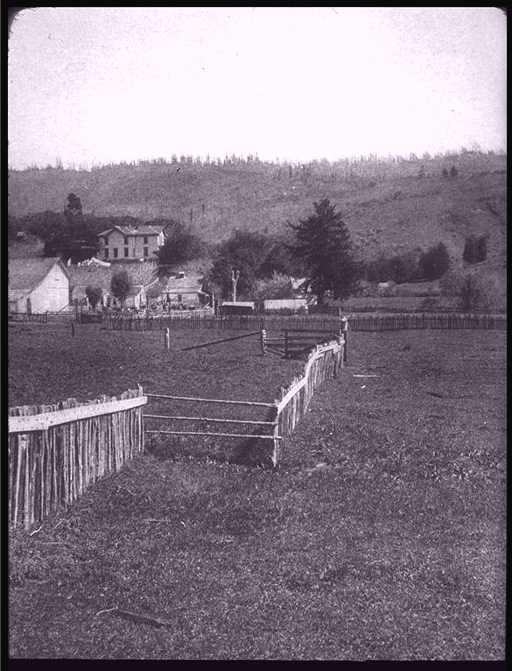
|
Much of the
damage was initially most severe in the Marina
district, where buildings had foundations
consisting of bayfill and sand. Bayfill often
magnifies the shaking during an earthquake, which
can cause an M6.0 to emulate the damage of an M7.0.
The shaking of the buildings lasted a few seconds
longer than the original shockwaves, contributing
to the bad condition of the Marina
district.
However, it is
thought by many that the fire caused most of the
property damage as a result of the earthquake. Many
buildings burned during the inferno, and because of
a lack of working water mains, the fire department
was almost powerless to stop the fire. They
eventually had to resort to extreme measures:
creating a fire block with the surrounding houses.
The method worked, and after 3 days of an incessant
blaze, the fire was finally out.
|
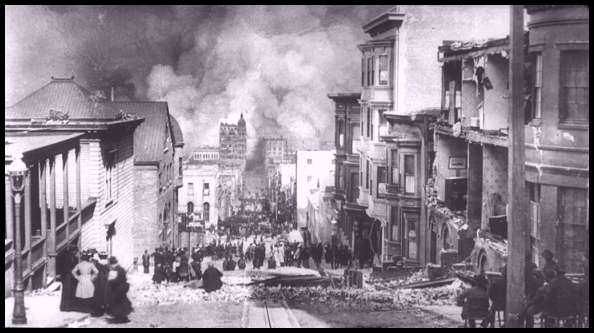
|
It
is thought that the fire caused most of
the property damage as a result of the
earthquake. It burned for 3 days,
destroying nearly 5 sq. mi. of San
Francisco land.
|
The reason for
the water main problems stems from the Marina
district's many woes. The water mains were located
within the bayfill, and as a result, were greatly
affected by liquefaction. Liquefaction occurs when
water-saturated sand becomes temporarily swamp-like
during ground shaking. In the 1906 quake, the
indirect cause of many of San Francisco's problems
(lack of water resulting in an uncontrollable fire,
amplified shaking) was liquefaction.
--by
Alex Hoff
�
|
�
|